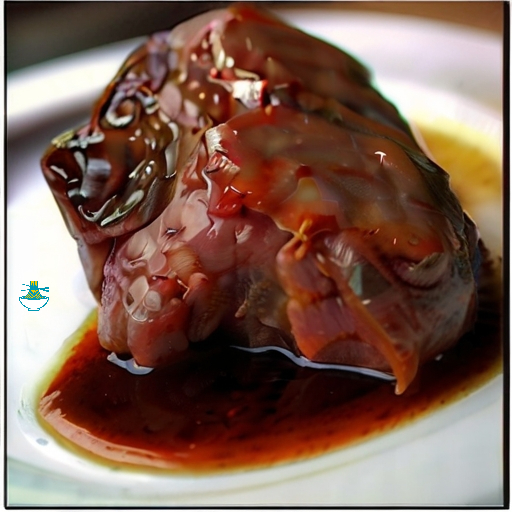Embark on a culinary journey to the remote and rugged Faroe Islands, where ancient traditions meet modern tastes. "Ræst kjøt," or fermented lamb meat, is a cherished delicacy deeply rooted in Faroese culture. This traditional preservation method involves hanging the meat in open-air sheds to air-dry and ferment for several months, resulting in a unique and complex flavor profile unlike any other.
In this immersive exploration, delve into the process of crafting Ræst kjøt, where time-honored techniques passed down through generations intersect with the island's natural environment. Discover the secrets behind the perfect balance of salt, wind, and time required to transform fresh lamb into a culinary masterpiece.
Join us as we uncover the rich history and significance of Ræst kjøt within Faroese society, from its origins as a survival necessity to its status as a beloved culinary tradition. Learn about the rituals surrounding its preparation, from the careful selection of meat to the precise timing of fermentation.
Experience the tantalizing flavors and textures of Ræst kjøt for yourself, as we invite you to savor this iconic Faroese delicacy. Whether enjoyed on its own or paired with traditional accompaniments such as potatoes and turnips, each bite offers a glimpse into the soul of the Faroe Islands—a testament to the resilience and ingenuity of its people.
Ingredients:
- 2-3 kg (4.4-6.6 lbs) of mutton or lamb meat, preferably from the shoulder or leg
- Sea salt (about 2-3 tablespoons per kilogram of meat)
- Kitchen twine or butcher's string
Instructions:
Prepare the Meat:
1-Rinse the meat under cold water and pat it dry with paper towels.
2-Trim off any excess fat or connective tissue from the meat, but leave a thin layer to help with the fermentation process.
Salt the Meat:
1-Liberally sprinkle sea salt all over the surface of the meat, ensuring it is evenly coated. Use about 2-3 tablespoons of salt per kilogram of meat.
2-Massage the salt into the meat, covering all sides. Pay special attention to any crevices or folds.
Wrap and Tie the Meat:
1-Once salted, wrap the meat tightly in cheesecloth or muslin to protect it from dust and insects during the fermentation process.
2-Use kitchen twine or butcher's string to tie the wrapped meat securely. Make sure it is tied snugly, but not too tight to allow air circulation.
Hang and Ferment:
1-Find a well-ventilated and cool area to hang the meat. Traditionally, Faroese people use specially built drying sheds, but you can also hang it in a cool cellar or garage.
2-Hang the wrapped meat in the chosen location, ensuring there is space around it for air circulation. Ideally, the temperature should be between 5-10°C (41-50°F).
3-Allow the meat to ferment and air-dry for at least 3-4 months. During this time, a crust may form on the surface, which is normal and adds to the flavor.
Check and Rotate:
1-Periodically check the meat to ensure it is drying properly and hasn't developed any mold. A white or grayish mold is common and harmless, but if you notice any other colors or foul odors, discard the meat.
2-Rotate the meat occasionally to ensure even drying. This helps prevent any areas from becoming too moist and developing mold.
Serve and Enjoy:
1-After the fermentation period, unwrap the meat and trim off any hardened crust or mold.
2-Slice the Ræst kjøt thinly and serve it as a traditional Faroese delicacy. It pairs well with potatoes, turnips, and other hearty accompaniments.
3-Store any leftovers in a cool, dry place or in the refrigerator for extended preservation.
Enjoy the robust flavors and rich history of Faroe Islands' Ræst kjøt, a true taste of Faroese tradition!
Nutritional Values:
Mutton or Lamb Meat (per 100g serving):
- Calories: 250-300 kcal
- Protein: 25-30g
- Fat: 16-20g
- Saturated Fat: 6-8g
- Cholesterol: 80-100mg
- Sodium: 60-80mg
- Iron: 2-3mg
benefits
- Excellent source of high-quality protein, essential for muscle repair and growth.
- Rich in vitamins and minerals, including iron, zinc, and B vitamins, which are important for overall health and energy production.
- Provides essential fatty acids, such as omega-3 and omega-6, which support heart health and brain function.
Sea Salt (per tablespoon):
- Calories: 0 kcal
- Sodium: 2300-2400mg (mainly from sodium chloride)
benefits
- Contains essential minerals like sodium and chloride, which play a crucial role in maintaining electrolyte balance and proper nerve function.
- Helps enhance the flavor of the meat and acts as a natural preservative during the fermentation process.
- Supports hydration by helping the body retain water and maintaining proper fluid balance.
Please note that these values are approximate and can vary based on factors such as the specific type and cut of meat, the amount of fat trimmed, and the exact brand of sea salt used. Additionally, the fermentation process may alter the nutritional composition of the final product to some extent. If you require precise nutritional information, it's advisable to consult a food scientist or conduct laboratory analysis.


Comments